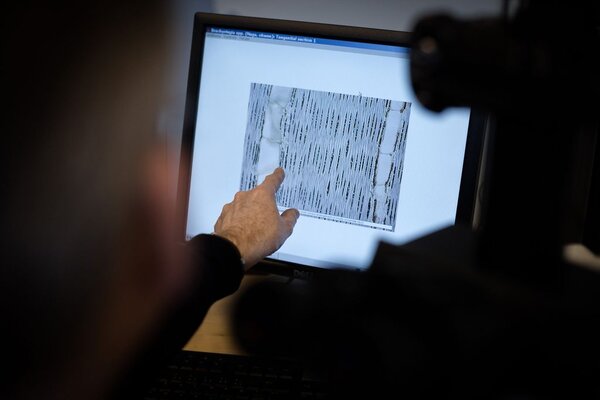Expertise
The scientific wood collection (Xylothek) of the Thünen Institute in Hamburg
Gerald Koch
The scientific wood collection of the Thünen Institute has been built up over many decades and today encompasses some 35,000 wood samples from 11,300 species.
1. History
The wood collection is based on individual pieces from the "Institute for Foreign and Colonial Forestry" founded in 1931 in Tharandt (Saxony). However, a systematic recording of the collection did not begin until 1945 at the "Reichsinstitut für Ausländische und Koloniale Forstwirtschaft" (Reich Institute for Foreign and Colonial Forestry) in Reinbek near Hamburg under the direction of Prof. E. Schmidt. He began to catalogue and enlarge the collection, which at that time already comprised around 4,000 samples.
When he retired in 1956, the collection had more than doubled to around 9,500 samples. Already at this time the collection no longer had a "museum" character, but was fully integrated into wood research as an important working instrument. In 1956 Dr. H. Gottwald took over the collection as curator, which had since become part of the Federal Research Centre for Forestry and Forest Products, Reinbek. In spite of many additional tasks, H. Gottwald succeeded in expanding the collection as an indispensable scientific instrument for wood research and teaching during the almost three decades under his responsibility. Through intensive international exchange with other institutions and his own collection activities in many tropical countries, the collection had grown to about 18,000 samples by the end of 1983. Even more important than the numerous expansion was, however, the processing of the collection for microscopic examinations, which probably led to a worldwide uniquely high degree of processing (approx. 70 % of all collection samples are documented several times by corresponding micropreparations).
2. Application
The collection is the most important prerequisite for the anatomical determination of wood species, a service that is in great demand both nationally and internationally. Such requests come mainly from the timber trade and industry, from public authorities and private individuals who have to deal with the question of "What kind of wood is this" for various reasons. The collection is also becoming increasingly important for testing under the Washington Convention on International Trade in Endangered Species of Wild Fauna and Flora (CITES).
In addition, the collection serves the scientific investigation of botanical genera or families with contributions of the wood structure to taxonomy and systematics and is an indispensable basis for the databases for the computer-assisted determination of wood species (Commercial Timbers, macroHOLZdata, CITESwoodID and softwoodID) created at the Thünen Institute of Wood Research.
3. Statistics
- Number of specimens: approx. 35,000 (including dublettes)
- Number of families: approx. 245
- Number of genera: approx. 2,400
- Number of species: approx. 11,300
Plant families represented particularly extensively:
- Boraginaceae
- Dichapetalaceae
- Dipterocarpaceae
- Ebenaceae
- Lauraceae
- Fabaceae
- Magnoliaceae
- Monimiaceae
- Myristicaceae
- Palmae (Rattan Gattungen)
Important collections (integrated):
West Africa: JENTSCH, MILDBRAED, ZENKER (Cameroon); KERSTING (Togo); COOPER (Liberia); DETIENNE (Ivory Coast); DECHAMPS (Angola); BRETELER & al. (Dichapetalaceae)
East Africa: SCHLIEBEN (Tansania)
Latin Amerika: OTS (Organisation of Tropical Studies, Costa Rica); TESSMANN (Peru); POVEDA (Costa Rica); KRUKOFF (Brasil); SCHMIDT (Bolivia); SCHROEDER (Uruguay); EGGERS & BERGE (Caribic Islandsk); STAHEL (Surinam)
North America: BWC Syracuse
Asia: KRUKOFF (Sumatra); GAMBLE (India); BZF Bogor (Indonesia)








